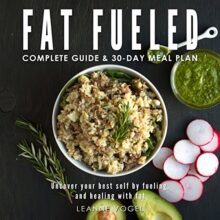The Island Cooking of Crete
No experience of the Greek table is complete without a visit to Crete.
00:00:05
Here, on Greece’s largest island, researchers first identified the healthful way of eating now known as the Mediterranean Diet.
00:00:13
In the years following World War II, a medical team from the Rockefeller Foundation was surprised to find that Cretans were far healthier than Americans.
00:00:22
A close look at the Cretan diet revealed a regime that included little meat and no milk or sugar, but plenty of grains and pulses, greens and nuts, olive oil and honey, and a moderate amount of wine and raki.
00:00:37
Unwittingly, the researchers had stumbled upon the outlines of the now famous Mediterranean Diet. Cretan cooking draws on the enormous resources of this fertile island. Crete produces more olive oil than any other Greek region.
00:00:51
Its mountains boast more edible plants than anywhere else in Europe.
00:00:56
It has an ancient cheesemaking tradition, while its gentle climate nurtures a wide range of fruits and vegetables. Underpinning the Cretan approach to food is an insistence on absolute freshness and simplicity. In this brief look at the Cretan way of cooking and eating, you will be struck by the ubiquitous presence of leafy greens and other vegetables, the lavish use of olive oil, the reliance on fresh and dried herbs, and perhaps most important to Cretan longevity, the open-hearted generosity and hospitality that accompany meals here.
00:01:32
For an overview of Cretan ingredients, we take a tour of the Saturday farmers’ market in Chania with restaurant owner Babis Mastourides. Here we see products from local farms, but also fruits and vegetables from other parts of the island and from as far away as Macedonia.
00:01:50
The market is also well supplied with wild greens including ascrolibri — a kind of thistle whose roots and tips are highly prized….
00:01:59
And Bitter Stamnagathi — not too different from our arugula, which is eaten both raw and cooked. At the next stand, we see the plump yellow quinces called kydonia…. Foot-long runner beans….
00:02:13
Pumpkin for filling savory pies…. tiny olives, zucchini flowers, picked early in the morning which Cretans like to stuff; Greek celery, thinner and more pungent than American celery, Grapes and vine-leaves for stuffing….
00:02:29
Summer greens–such as vlita, amaranth and stifnos…. Sea salt, pots of small leafed basil….
00:02:36
And the most popular dried herbs – oregano, sage, and diktamo, gathered wild from the mountains. Sage and diktamo, which grows only on Crete, are used more for teas than in cooking. Snails — only 5 euros a bag; avocados and small bananas. In Chania’s Central Market, Babis shows Steve the catch of the day, which includes a Pinocchio fish and loutza, or Mediterranean barracuda.
00:03:05
He introduces Steve to Stamatis, whose family has been running one of the market’s tavernas for three generations, and points out traditional dishes like lambs’ stomach in egg-lemon sauce and lambs’ head roasted on a spit.
00:03:20
At the cheese stall, Yannis — the merchant — rattles off names as fast as an auctioneer. Most of his inventory is made by his brothers from sheep’s milk.
00:03:30
The options range from aged gravieras to fresh myzithra, ricotta-like anthotyro and fresh malaka for filling pies. At an herb shop behind the market, Vayia shows off the great variety of Cretan herbs, used both in cooking and in tisanes for their therapeutic value.
00:03:48
[Vayia speaking] This is herb — we call diktamo. They have been in the very high mountains. and also in the gorges. And sometimes they want to climb to pick this. And they use for tea. And they they have a lot of…. [Chef Steve Jilleba] Medicinal purposes.
00:04:10
And you had said before that it’s used for every all the health ailments. So, sounds like that this is the best of all of them? [Woman speaking] This is the best of all, yes.
00:04:20
[Chef Steve Jilleba] If you drink this, this will almost fix everything. [Woman] Yes, yes.
00:04:23
[Woman] Because this help fight all the body. And this, it is for everything. [Host] And this only grows in Crete, right? [Woman] Only Crete, yeah. Also near the Central Market is a Chania institution: Iordanis “Bougatsa Parlor.” The shop has been a landmark since 1935, and it operates on the principle that if you’re doing something right, don’t change it.
00:04:51
In contrast to the even older Ariston Pie Emporium in Athens, with its repertoire of more than 70 pies, Iordanis serves one dish only – a creamy cheese pie with an indescribably light and crisp pastry. We are lucky enough to see the bougatsa being made at Iordanis’s workshop.
00:05:11
Iordanis’ wife prepares the dough, rolling it finer than onion skin.
00:05:16
Then she fills it with whipped day-old myzithra, a goat’s milk cheese is a specialty of the area. The incredibly elastic dough consists of nothing more than flour, water, and a pinch of salt, with oil added in the rolling process.
00:05:32
Iordanis is an institution, you can’t come here and not have a bougatsa. And how does it taste? Delicious.
00:05:40
[Woman] This is so creamy. This is so….
00:05:43
[Chef Steve Jilleba] Crunchy. Creamy. Little bit of sweetness. [Woman] Yeah. [Chef Steve Jilleba] This is nice. [Woman] Yeah.
00:05:50
[Narrator] With Babis as guide, we drive into the hills above Kolymbari, west of Chania, where his cousin, Antonis Papayiannakis, gives us a close – almost too close – view of his bee hives. Antonis only collects honey once a year, in the summer, when the hives yield thyme honey…. It’s the most prized of all . He averages 10 to 15 kilos per hive, much less than the 80 to 100 kilos that hives produce in northern Europe, where it rains more. Perhaps this is why Greek thyme honey is so expensive. But the taste is unsurpassed.
00:06:26
Honey is widely used in Greece, especially in sweets, but the Cretans also enjoy it with graviera cheese.
00:06:34
And some chefs add it to savory meat dishes as well.
00:06:38
Early one morning, Babis takes us to a local bakery to see barley rusks being made.
00:06:43
In Crete, people eat these rock-hard rusks, called paximadia, as often as they do fresh bread.
00:06:49
Those rusks, made from a mix of barley and wheat, are considered the tastiest and most healthful.
00:06:55
One of the most popular uses of rusks is as a base for chopped tomatoes and fresh white cheese. The rusk soaks up the tomato juices and olive oil, becoming much softer and quite delectable. Paximadia, an ancient food that has never gone out of style, are now in fashion all over the country.
00:07:14
The loaves here are about to enter a wood-fired oven.
00:07:17
When done, they’ll be cut into thick slices and returned to a warm oven to dry for several hours, until all traces of moisture have vanished.
00:07:27
The dry barley rusks will keep for years, literally.
00:07:32
For a closer look at Crete’s olive oil industry, we stop at Biolea, in northwest Crete.
00:07:38
George Dimitriadis has been making organic, stone-ground olive oil here since 1994, on an estate acquired by his family in the mid 1800s.
00:07:49
[George Dimitriadis] The main variety cultivated here in Crete, it’s called Koroneiki.
00:07:55
This variety — the main difference is that it’s very hardy and drought resistant, but it has very small fruits and it has a distinctive taste which when it couples with the microclimate and the soil conditions, it gives a very distinct olive oil that tastes characteristically as a Cretan product. The island produces about 5% of the world production of olive oil and close to 90 percent of that is extra-virgin.
00:08:34
So, it’s very important cultivation and it’s very important the island production for the world production.
00:08:40
Cretan people they like their olive oil to be mild, because we eat much of it. If it is strong tasting, then you can taste anything else.
00:08:52
It actually takes away from the subtle tastes of vegetables and greens and everything else. So, can you imagine, we are per capita eating about 30 32 kilos of olive oil, and we don’t like to have one taste cover everything.
00:09:12
So, we’re looking for an olive oil that it would have a rich complicated aftertaste. Something they’ll synthesize the taste that we cook together and not overpower them.
00:09:24
Because we were used to eating the olive oil that comes from a mill stone. In that process, the skin and the leaves of the olives — they are not….
00:09:34
….tear in very small pieces as is done in in electric motocrosser. In the industrial processing.
00:09:44
So, that the bitter agents, they are not there to make it very bitter or very high peppery or whatever you may call that.
00:09:54
And that’s how we like it here. That’s the oil we produce and our point of view it is trying to produce something that we are accustomed to, something we know, something that we used to eat, and present it out there. Not to present something or to produce something that a particular market likes it because it’s this or because it’s that.
00:10:18
We trying to to follow our roots and present our food culture as it is. Biolea is an exclusive estate.
00:10:33
We are a cultivator our own trees. We are producing an average of…. ….let’s say about 100,000 bottles.
00:10:43
And they are distributed worldwide.
00:10:47
There are a lot of scientific information about olive oil…. And there is a lot of regulations about olive oil.
00:10:57
And we get very technical and very scientific when we talk about olive oil.
00:11:04
And if you look at an olive oil label, you might think that it’s a cough syrup.
00:11:11
The message that has to go to the consumer, it is that olive oil…. ….before anything else, it’s food.
00:11:22
You smell it, if you like it, taste it.
00:11:25
If you taste it and you like it, then buy it.
00:11:31
99% you’re in the right track and you will enjoy it. You don’t have to change your diet to a Mediterranean or Cretan diet or any other diet.
00:11:43
Be smart and find how to integrate the olive oil to whatever diet you have. You’ll get the benefit. [Narrator] To visit another olive oil producer, we travel east from Chania toward the coastal city of Rethymno. In the hills outside Rethymno we find the Agreco Organic Estate and Restaurant, voted the World’s Best Organic Restaurant by Vanity Fair magazine, which praised it as a unique dining experience. Agreco belongs to the Grecotel chain, Greece’s largest hotel group.
00:12:17
Dimitris Kalaitzidakis, a Grecotel general manager, introduces us to the ten-year old restaurant. The setting is magnificent, overlooking the estate’s olive groves and vineyards. They welcome the group with typical Cretan hospitality.
00:12:34
The restaurant’s husband-and-wife team demonstrates some classic stuffed vegetable dishes.
00:12:40
Chef Nikos has gathered the zucchini flowers, eggplant, squash, and grape leaves from the estate’s organic gardens. Unlike most cooks who cut off the tops of tomatoes, Nikos trims the bottoms. He scoops out the tomato and zucchini flesh for the stuffing but very little of the eggplant, because they tend to be bitter. [Chef Nikos] Now, start with the zucchinis…. [Ambient noise] It’s very easy if you know the trick.
00:13:17
From the mythology — Zeus, the God of Gods, and the God of hospitality supposedly was born in the mountains of Psiloritis. And that’s why, I mean, the feeling of hospitality is so strong here…. compared to any other destinations, I mean, even in Greece.
00:13:36
This is uncooked rice because we’re going to put…. After we starve them, we’re going to put them in the oven.
00:13:42
And from the juice of the grated vegetables, along with the rice…. We’ll stuff the vegetables, putting them in the oven. We put pepper, salt….
00:13:56
and some tomato paste.
00:14:00
[Chef Steve Jilleba] So, and it’s a short grain rice? [Chef Nikos] Yeah.
00:14:06
We’ll put our own organic olive oil.
00:14:10
We are used to….I mean being Crete, with so much olive oil production, we put a lot…. ….and because it’s a vegetable dish and especially for the summer time, the quantity helps it and as a matter of fact, it tastes much better next day, even after you take it out of the fridge….. [Chef Nikos] Lovey. A little bit…. [Chef Steve Jilleba] More oil? [Chef Nikos] While in Crete. (laughs) [Narrator] Kyria, Nikos’s wife, shows us how to stuff zucchini flowers, which must be picked early in the morning, while they’re still open.
00:14:57
Zucchini flowers are so popular in Crete that you can buy bouquets of them at the farmers market. They are delicate, and must be filled gently so they don’t tear.
00:15:08
To make stuffed vine leaves, or dolmadakia, the pan is first lined with a few torn leaves. In times past, cooking skills were judged by the size of the dolmadakia. The rolls had to be small and very thin, with the leaves’ shiny side out.
00:15:25
Today, stuffed vine leaves are nostalgia food for most Greeks. [Chef Nikos] I mean all the grandmothers…..
00:15:32
….they were…. they had the patience I mean to do all this.
00:15:35
And we always associate having this food with memories from grandmother’s and…. ….they were very, very happy to do. Especially the grandmas…. ….the “YiaYia’s” for the families.
00:15:48
And the another reason to do this was…. You…. I mean people from the family, from neighbors….. they were helping that, and they were doing this in the mechanical way and they were chatting, I mean gossiping, was going on the village and all that.
00:16:07
So, you see that was been built up? Please, try one. [Chef Steve Jilleba] So, these just came off the stove and the lemon juice on there and…. [Chef Nikos] Very hot. [Chef Steve Jilleba] Very hot.
00:16:23
[Chef Nikos] You see how moist? [Chef Steve Jilleba] This is Heaven. [Chef Nikos] It is.
00:16:26
[Chef Steve Jilleba] This is Heaven. It is very moist.
00:16:29
[Chef Nikos] It’s not easy to make, but this is the best of it. [Chef Steve Jilleba] No, it’s very good. It’s excellent.
00:16:39
[Narrator] Babis invites us for Sunday lunch at his restaurant, Nykterida, “the Bat,” which overlooks Souda Bay.
00:16:46
It was founded in 1933 by his father, a legendary figure, who taught Anthony Quinn how to dance the sirtaki for his role as Zorba the Greek. You can’t have a Cretan feast without a pie or two, so Babis has arranged for Diamando, one of his cooks from a nearby village, to make some for us on the verandah.
00:17:07
You could write a book on the traditional pies of Greece, and one of the largest chapters would be on Crete.
00:17:14
Here, pies come in all shapes and sizes and with all types of fillings. They can be square and no bigger than ravioli, crescents, open-faced tarts, coils, packets . . . or party-sized creations that fill a roasting pan. The smaller ones are often fried, not baked.
00:17:32
And, of course, they provide a convenient package for all those Cretan cheeses and greens.
00:17:38
Diamando has already prepared the dough with flour, oil, water, milk, and a little salt and set it aside to rest.
00:17:46
Note how she rolls out the pastry. Like Stamatia and Ella, whom we observed on Kea, she stretches the dough very thin with her “broomstick” of a rolling pin, in an even smaller workspace.
00:17:58
She trims the phyllo, which is the same for both pies, and then mixes the first filling: Chopped spinach, three kinds of soft fresh cheese – Myzithra, Anthotyro and Malaka– a little salt, spring onions, parsley, mint, dill, and wild fennel.
00:18:16
She kneads the ingredients with her hands, then puts a spoonful in the center of a square of pastry and folds the sides over diagonally to form a packet.
00:18:26
She will paint the pies with egg yolk, sprinkle them with sesame seeds and then bake them.
00:18:32
But they can also be fried, without the egg glaze and without the seeds.
00:18:40
Simplicity, especially in Crete, we let fresh ingredients speak for themselves. Local products.
00:18:48
Simplicity is a key word.
00:18:51
Recognize what you’re eating.
00:18:55
The secrets of a healthful Mediterranean diet.
00:19:00
[Traditional Greek music playing]






